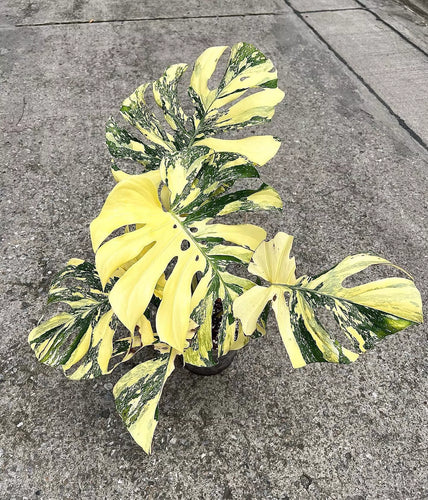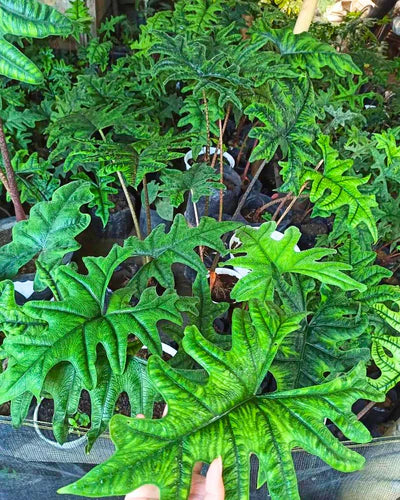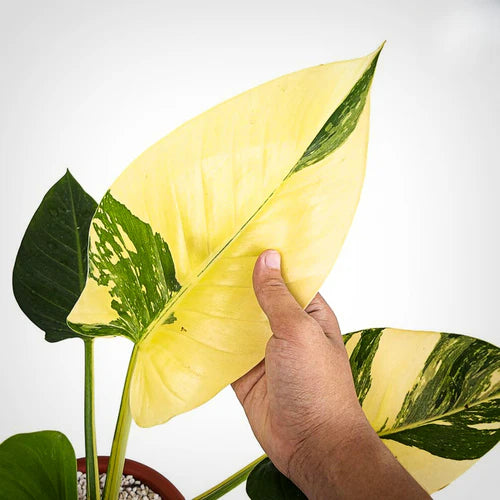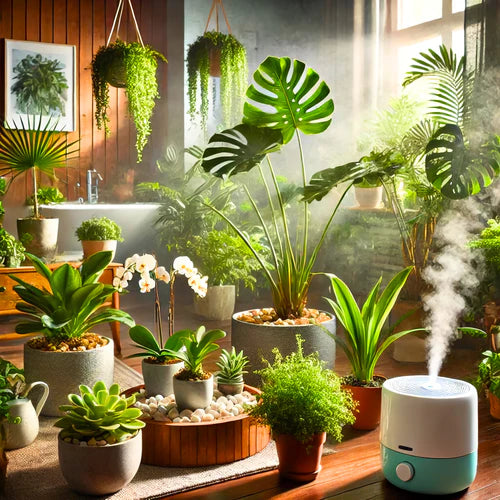Is Philodendron Melanochrysum Hard to Grow?

Table of Contents
- Introduction: Exploring the Philodendron Melanochrysum
- The Distinct Characteristics of Philodendron Melanochrysum
- Is Philodendron Melanochrysum Hard to Grow?
- Essential Care Tips for Philodendron Melanochrysum
- Light Requirements
- Watering Needs
- Soil and Fertilization
- Temperature and Humidity
- Common Challenges in Growing Philodendron Melanochrysum
- Propagation Techniques for Philodendron Melanochrysum
- Where to Find Philodendron Melanochrysum for Sale
- Advanced Care Tips for Experienced Gardeners
- Philodendron Melanochrysum Vs. Other Philodendrons
- Final Thoughts: Simplifying Philodendron Melanochrysum Care
- Resources and Further Reading
- Philodendron Melanochrysum FAQ
Introduction: Exploring the Philodendron Melanochrysum
Philodendron Melanochrysum, commonly known as the 'Black Gold Philodendron,' is a striking tropical plant known for its large, velvety dark-green leaves with bright golden veins. Originating from the dense rainforests of Colombia, this vining philodendron is both a stunning decorative piece and a fascinating plant to grow.
The Distinct Characteristics of Philodendron Melanochrysum
Before diving into the specifics of its care, understanding the unique characteristics of Philodendron Melanochrysum helps in appreciating why it’s sought after. This plant features elongated, heart-shaped leaves that can grow up to 2 feet in length in ideal conditions, making it a dramatic addition to any indoor plant collection.
Is Philodendron Melanochrysum Hard to Grow?
Contrary to popular belief, growing Philodendron Melanochrysum is not as daunting as it might seem. With proper knowledge and care, even novice gardeners can cultivate this exotic beauty successfully. The key is understanding and replicating its natural tropical environment.
Essential Care Tips for Philodendron Melanochrysum
Light Requirements
Philodendron Melanochrysum thrives in bright, indirect light. Direct sunlight should be avoided as it can scorch the leaves. A north-facing window or a spot that receives filtered light through sheer curtains is ideal.
Watering Needs
Watering is critical for Philodendron Melanochrysum. The soil should be allowed to dry out slightly between waterings. Overwatering can lead to root rot, while under-watering can cause the leaves to droop and lose their luster.
Soil and Fertilization
A well-draining, nutrient-rich potting mix is essential. Incorporate orchid bark, perlite, and peat moss to ensure adequate drainage. Fertilize monthly during the growing season with a balanced, water-soluble fertilizer to support its vigorous growth.
Temperature and Humidity
Being a tropical plant, Philodendron Melanochrysum prefers a warm and humid environment. Aim for temperatures between 65-80°F (18-27°C) and maintain high humidity by misting the leaves regularly or using a humidifier.
Common Challenges in Growing Philodendron Melanochrysum
While generally resilient, Philodendron Melanochrysum can face challenges such as pest infestations, including spider mites and mealybugs, and diseases like leaf spot and root rot. Regular inspection and immediate action are crucial to managing these issues effectively. Here is a full guide on Philodendron Melanochrysum Care.
Propagation Techniques for Philodendron Melanochrysum
Propagation of Philodendron Melanochrysum is typically done through stem cuttings. This can be a rewarding process, allowing you to multiply your collection or share this beautiful plant with friends.
Where to Find Philodendron Melanochrysum for Sale
Philodendron Melanochrysum is available at specialty plant stores and online nurseries. Ensure you purchase from reputable sources to guarantee a healthy plant. Find Philodendron Melanochrysum for sale near you.
Advanced Care Tips for Experienced Gardeners
For those looking to take their care to the next level, experimenting with different humidity trays, custom soil mixes, and advanced lighting setups can enhance the growth and vibrancy of your Philodendron Melanochrysum.
Philodendron Melanochrysum Vs. Other Philodendrons
When compared to other philodendrons, the Melanochrysum stands out for its unique leaf texture and coloration. Understanding the subtle differences can help in better care and placement within your collection.
Final Thoughts: Simplifying Philodendron Melanochrysum Care
With the right care and attention, growing Philodendron Melanochrysum can be a straightforward and rewarding experience. Embrace the challenges and enjoy the lush, vibrant growth that makes this plant a prized possession in any indoor garden.
Resources and Further Reading
For those interested in delving deeper into the world of Philodendron Melanochrysum and other rare tropical plants, here are some recommended readings and resources. Explore rare indoor houseplants at Plant Vault.
By adhering to the care guidelines and embracing the unique aspects of Philodendron Melanochrysum, you can enjoy the beauty and satisfaction of growing one of the most sought-after philodendrons in the world.
Philodendron Melanochrysum Frequently Asked Questions
No, Philodendron melanochrysum and Philodendron micans are not the same. While both are vining philodendrons with velvety foliage, melanochrysum leaves are larger, darker, and more structured compared to the smaller, more iridescent leaves of micans.
Q: What is the difference between Philodendron Gloriosum and Philodendron melanochrysum?
Philodendron Gloriosum is primarily a terrestrial, crawling plant with broad, heart-shaped leaves, while Philodendron melanochrysum is a climber with elongated, dark green velvety leaves. The leaf texture and growth habits are the main differences between these two stunning plants.
Q: How do you identify a Philodendron melanochrysum?
You can identify Philodendron melanochrysum by its large, elongated leaves with deep green coloring and bright yellow to white veins. The leaves have a velvety texture and a distinct, almost metallic sheen.
Q: Is Philodendron melanochrysum a climber or crawler?
Philodendron melanochrysum is a climber. It thrives when provided with a support like a moss pole, which mimics its natural growth habit of climbing trees in the rainforest.
Q: How do you make philodendron melanochrysum leaves bigger?
To encourage larger leaves on a Philodendron melanochrysum, ensure it has adequate light (bright, indirect light is best), sufficient humidity (above 60%), and regular feeding during the growing season with a balanced fertilizer. Providing a suitable climbing support like a moss pole can also help maximize leaf size.
Q: Is Philodendron melanochrysum a slow grower?
Philodendron melanochrysum can be considered a moderate grower. Its growth rate can vary based on environmental conditions such as light, water, humidity, and nutrition. In optimal conditions, it grows more vigorously.
Q: Do Philodendron melanochrysum need a moss pole?
Yes, providing a moss pole or similar climbing support for Philodendron melanochrysum is highly recommended. This support mimics its natural habitat and encourages the plant to produce larger, healthier leaves.
Small leaves on a Philodendron melanochrysum can be due to several factors including insufficient light, lack of a climbing support, inadequate nutrition, or low humidity. Addressing these care aspects can help promote larger leaf growth.






